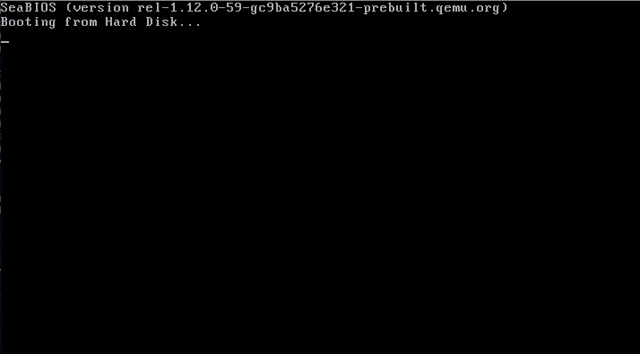Xv64
Xv64 is a 64-bit UNIX-like operating system targeting AMD64 compatible processors.
Special Thanks
Inspired by Dennis Ritchie's and Ken Thompson's Unix Version 6 and forked from xv6 (rev. 8) by the Massachusetts Institute of Technology, with 64-bit porting merged from work done by Brian Swetland.
Getting Started
Ensure that you have Docker† installed and execute ./build.sh to compile the OS. Once compiled you can run it locally by either:
1. QEMU
QEMU is perhaps the most tested option for running Xv64 within a virtual environment. For ease of use a helper script called run.sh is provided. This script takes a variety of parameters:
-r - this parameter rebuilds the app. This is not needed if the contents of bin are present or otherwise do not need to be rebuilt. This can also be omitted if you prefer not to use Docker, and instead run make binaries and the the run.sh script WITHOUT the -r parameter. Conversly, if you supply the -r parameter you do NOT need to manually invoke ./build.sh.
-l - this parameter stands for "legacy" and enables IDE drives. At the moment SATA drives are a work-in-progress, so if you actually want to run the OS (as opposed to developing AHCI/SATA support) you will want to INCLUDE this parameter.
Additional QEMU arguments can be supplied with the QEMU_OPTS environmental variable. For example, if you wanted to supply the QEMU option to disable its graphical UI (-nographic), you'd do that like:
env QEMU_OPTS=-nographic ./run.sh
2. VMWare
A VMWare image is built during compile time, and can be located in the bin folder. This image is not well tested, so the machine's configuration may need to be tweaked on an as-need basis.
3. Virtual Box
Virtual Box compatible VDI (virtual hard drives) are built during compilation and are located in the bin folder. If you desire to use Virtual Box you will want to create a new VM in Virtual Box and reference these drives. Such instruction is beyond the scope of this document.
4. Real hardware
Xv64 supports executed directly on REAL hardware. If you desire to go this route please see the system requirements below and read the INSTALL.md document for details.
† you do NOT need Docker to build or run Xv64. Provided the correct dependencies are installed, you can run make directly from your host OS - most likely Debian Linux. The Docker configuration is provided for ease of setup, please refer to the Dockerfile for details of what system dependencies (like build-essential, etc) are required if you forgo Docker.
System Requirements
Xv64, as it's name implies requires a 64-bit processor, specifically an AMD64 compatible one like those manufactured by Intel or AMD since approximately 2003/2004. Two or more cores/threads/sockets are required - no support for uniprocessors.
Boot environment must be legacy BIOS if using the provided bootloader. The OS can also be configured through GRUB using the ext2 extension and placing the kernel on a ext2 formatted partition.
Boot device can either be a SATA or IDE disk, but the root device must be IDE.
See INSTALL.md for additional requirements and specific installation steps.
License
This open-source software is licensed under the terms in the included LICENSE file.
